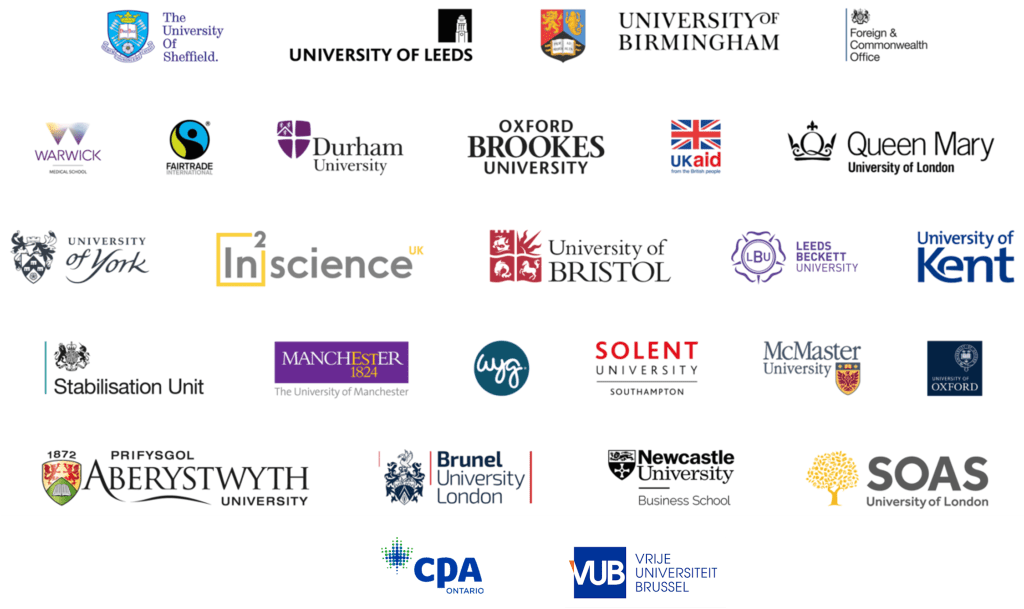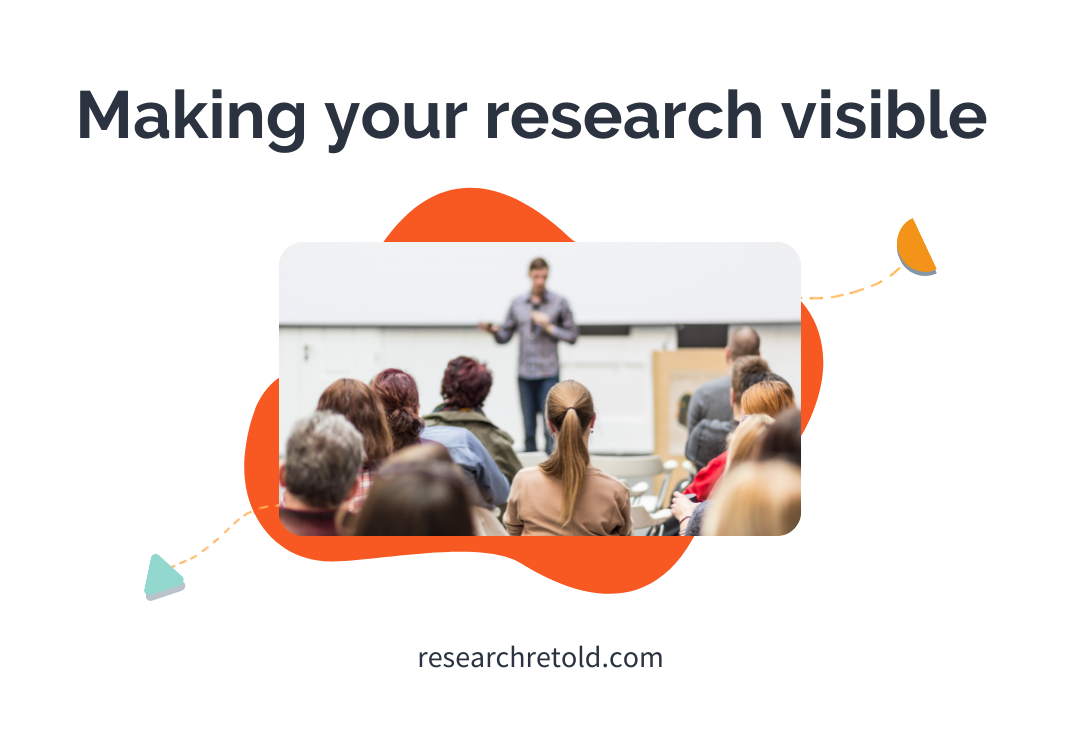Scientific research has the potential to create positive changes in society and our environment. However, knowledge alone is not enough to drive change if it is not in the right hands at the right moment.
As a researcher, have you ever felt your research might not have enough reach? How can you make sure your findings are being seen and used for creating policies, changing procedures or improving lives?
In this blog, we share the benefits of making your research visible and the methods we use to ensure the produced materials effectively reach out your target audience.
![]()
Making your research visible
For the past four years, the UK public investment in research and development has annually increased. In the period 2021-2022, roughly £15bn have been allocated (UKRI, 2021). However, decision-makers, industrial partners and the general public cannot fully utilise the research findings if the language and formats they are published in are inaccessible and difficult to comprehend to non-experts. In the words of Lavis (2009), “policymakers hear noise instead of music”.
For example, academic journal papers are usually written in technical terms, with a lot of jargon that key stakeholders, such as councils and funding bodies, struggle to understand. Effective research communication is increasingly important to ensure all the effort and resources put into research and technology development are fruitful.
We believe in making research visible by helping researchers and evaluators engage with decision-makers through creative visual storytelling formats. By creating accessible and actionable materials, researchers can support evidence-based decision making and reach non-academic audiences. This increases the impact of their research, which is now a core consideration throughout grants applications processes (UKRI, 2022).
Why visual formats?
Vision is one of our most important senses. Adding images to information makes it much more likely that we will remember it (Medina, 2014). When our brain sees an image, it starts to relate it with familiar symbols, scenes and/or patterns already stored information in our memory. By creating connections between them we start to comprehend what we are seeing (Lankow, Ritchie & Crooks, 2012).
Information visualisation enables audiences to gain insights and understanding quickly and efficiently (Lankow, Ritchie & Crooks, 2012). Certain elements of an image, such as the form, colour or spatial disposition can be processed by our brains even without active attention. Thus, using artistic and engaging material allows experts to communicate complex and socially relevant issues in a way the audience is more likely to remember (Vande Moere & Purchase, 2011).
In other words, visual materials are useful to convey information in a short amount of time, which is a great advantage when you want to reach very busy people. For example, successful efforts to support evidence-based policy-making have found two particularly useful visual tools for supporting evidence-based policymaking: interactive data visualisation software and infographics (Gruia, 2015).
Visual tools for making your research visible
Even if you are not looking to directly influence policymaking with your research, interactive data visualisation and infographics can be very useful tools to reach non-academic audiences. If you are planning on creating dissemination material, we highly recommend you consider them.
Interactive data visualisation
Interactive data visualisation materials can be interactive charts or maybe maps and scatterplots where the user can adjust the axis types, units or even the categories of the data displayed. These are great data visualisation formats for large datasets and quantitative research (Lankow, Ritchie & Crooks, 2012). They allow the audience to interact and explore the data, and hopefully, get the same conclusions as you, the researcher. Another advantage of these types of visualisation is that they improve transparency. Data is still available and results can be revised by any reader. You can look at the following examples to get inspiration:
Examples
- COVID-19 Projections by the Institute for Health Metrics and Evaluation (IHME)
- Flows of development assistance for health by the Institute for Health Metrics and Evaluation (IHME)
- Life expectancy related to income by Gapminder
- Birds biodiversity by Our World in Data
Tools
If you would like to create your own interactive data visualisation you don’t have to start from scratch. Here are some tools you can use for free to create interactive data visualisation material :
- Tableau – a platform for publicly sharing and exploring data visualisations online
- Google Charts – a practical way to display data in a website using pre-made simple JavaScripts that you embed in your web page
- Datawrapper – a data visualisation tool that does not require any programmings skills
- RAWGraphs – a platform that allows you to play with different visualisations of your data
Infographics
The word infographic is derived from ‘information graphics’, and today it refers to a graphic design that combines data, visualizations, illustrations, text and images into a format that narrates a complete story (Krum, 2014). Early use of infographics to present evidence to politicians goes back to the Victorian Era. Florence Nightingale created an infographic to show the causes of mortality of the British Army during the Crimean war (Rogers, 2010).
Infographics make use of graphic design to deliver “instant knowledge” in an engaging way without oversimplifying evidence into pictures. They can be used to pique the interest of the audience to know more about the topic (Gruia, 2015). We have found infographics to be very useful to extract the key findings of researchers’ work and very effective to engage broader audiences. You can find interesting examples on the following sites:
Examples
- Breastfeeding by 1000 Days
- European elections 2019: what’s next? By the European Parliament
- Licence to fly drone privacy laws around the world by Surfshark
Tools
Designing an infographic should consider how easy is to comprehend the content and how the design can increase the retention and appeal of the key message (Gruia, 2015). Here are some tools that can help you create appealing infographics:
What we do at Research Retold
Our mission is to create visual materials that help you as a researcher to amplify the impact of your findings. We take great care in ensuring the materials produced are effective, made with reliable information and aesthetically appealing, in correspondence to design requirements of utility, soundness and attractiveness (Vande Moere & Purchase, 2011).
Our process
We collaborate closely with you using our already tested and proven editing process. First, we have an initial consultation to discuss the objective audience and objective of the material. The next step is up to you, the researcher. You can send us a summary of your research or we can do it ourselves based on papers or reports. During this stage, we provide editorial advice on how to make the key messages easier to grasp. We usually have several feedback iterations until we make sure the text is accessible and effectively communicates the research findings.
Next, our designers get down to work. They create a visually appealing product according to what the researcher needs; these can be visual summaries, policy briefs, one-pagers, presentation slides, social media assets, you name it. We go through some feedback iterations too, and in the end, you receive materials to disseminate your findings.
Why it works
Our approach to understanding your needs as a researcher and analysing your audience’s position regarding your research is the key to creating effective research communication material. It allows us to work closely with you and make sure the final product meets your expectations and the needs of your audience.
So far, we’ve visualised the work of more than 200 researchers in universities, government bodies and research organisations across the UK, Canada and Brussels. Their feedback on our service drives us to keep helping researchers to make their research visible.

“Over a period of six months, Mihaela and her team worked with me to produce four outputs that clearly conveyed the results of a funded project on the geographies of austerity. With their advice and guidance, I was able to translate complex research findings into a language and style of communication that is accessible and interesting to non-experts and additionally develop a strategy for enabling my research to make a demonstrable contribution beyond the academy.
Through conversations with Mihaela, I was pushed to reflect upon how I communicate with public and third sector organisations, as well as the general public, and receive expert insight on how best to deliver my research findings to these diverse audiences going forward.“
Julie MacLeavy
Professor of Economic Geography, University of Bristol
Do you think producing visual materials is something that could help you as a researcher to reach out and generate more impact? Contact us at contact@researchretold.com to ask how we can help. We also offer training and guidance services if you want to improve your research communication skills.
Many thanks to our Research Communicator, Phebe Bonilla, for writing this blog post.
References
Gruia, M. (2015) “Closing the gap between evidence production and policy implementation using two innovative communication tools”. MSc thesis, Department of Politics, University of Sheffield.
Krum, R. (2014) “Cool Infographics: Effective communication with data visualization and design”, Wiley, Indianapolis. ISBN: 978-1-118-58230-5
Lankow, Ritchie & Crooks (2012) “Infographics: The power of visual storytelling”, Wiley, ISBN 978-1-118-31404-3. P 12-14
Lavis J.N. (2009) ‘Supporting Evidence-Informed Policymaking’, 8th Annual Symposium of the International Network Health Policy and Reform, Poland (Accessed 17 February 2022)
Medina, J. (2014) “Brain rules: 12 Principles for surviving and thriving at work, home and school”. Pear Press. ISBN: 9780983263371
Rogers, S, (2010) “Florence Nightingale, data journalist: information has always been beautiful”, The Guardian (Accessed 10 February 2022)
Vande Moere, A., Purchase, H. (2011) “On the role of design in information visualisation”, SAGE Publications 2011-10, Vol.10 (4), p.356-371. DOI: 10.1177/1473871611415996
